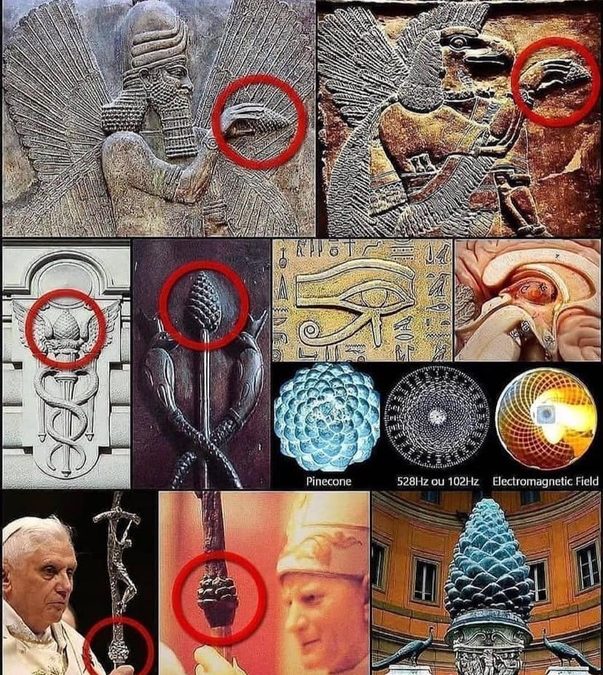Pine Cone Pineal
Pine cones were considered symbols of fertility by Romans, Greeks, Assyrians, and Christians. Their design forms a perfect Fibonacci sequence. Pine cones have also been associated with the Third Eye, enlightenment, and the pineal gland.
Ancient civilizations used the pine cone in architecture, sculpture, and paintings. The staff of Osiris has a pinecone on top of two intertwined serpents. Hindu gods have pine cones in their hands. Shiva’s hair is woven with snakes in the shape of a pine cone. Using the pine cones with serpents represents spiritual consciousness. Pine cones have also been used to symbolize eternal life. There are Assyrian carvings of god-like figures holding pine cones aloft. The Assyrians also show a pine cone being used to fertilize the Tree of Life. A statue of a Mexican deity holds a pinecone and evergreen tree branches. Dionysus also carried a staff topped with a pinecone. There is a three-foot-tall bronze pine cone that was used in ancient Rome as a fountain. It sat in the Pantheon.


















































































